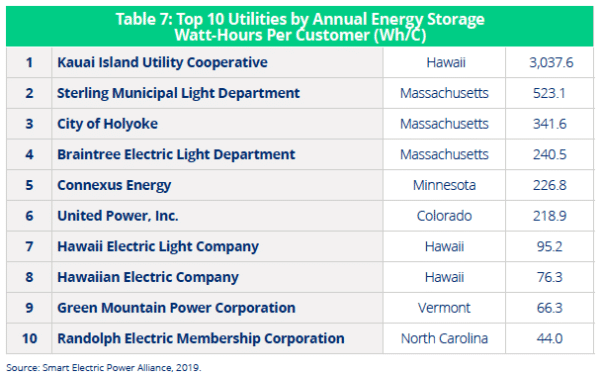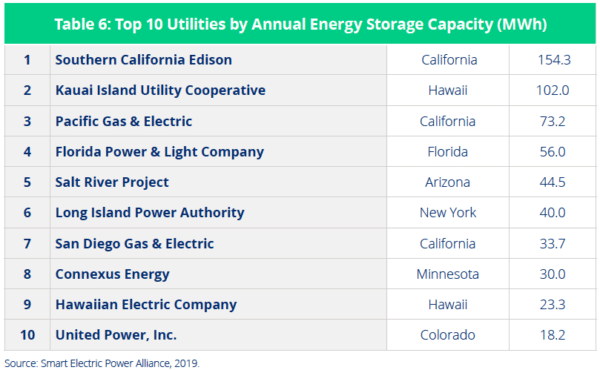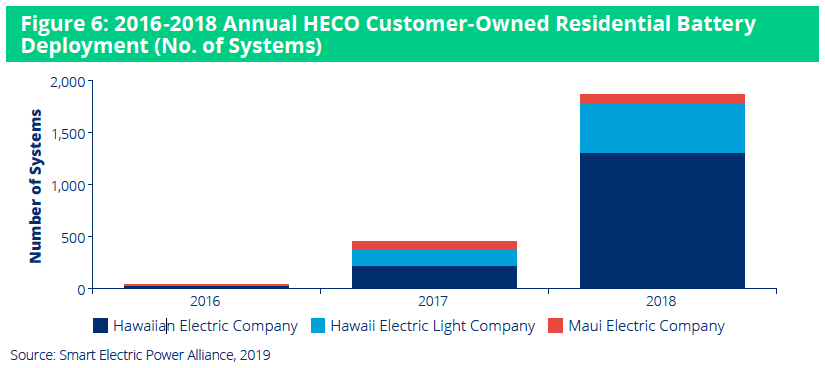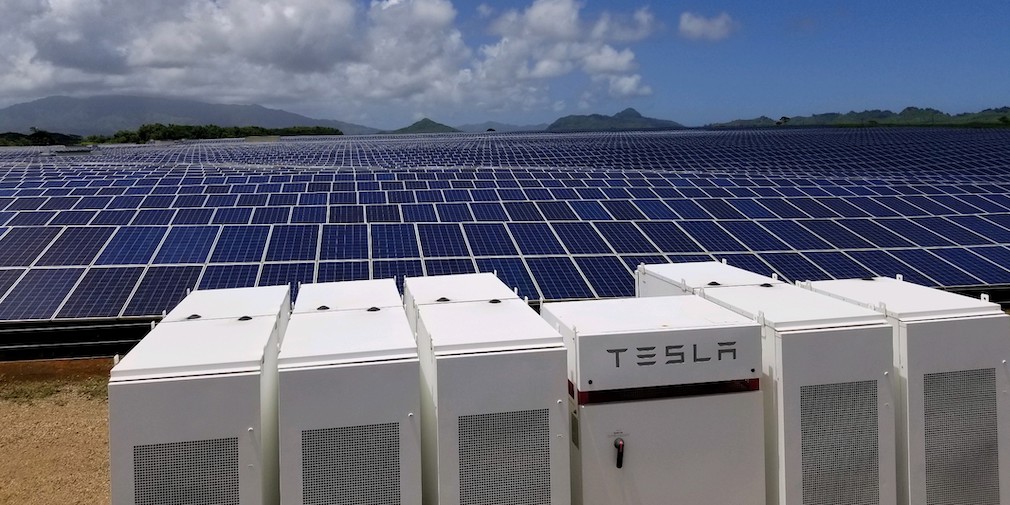California casts a long shadow over the solar and energy storage markets in the rest of the United States. The Golden State’s wide lead in policy and deployment proves true the maxim that as California goes, so goes the nation – usually five to ten years later.
 But while California is the largest residential battery market and has the most watts of energy storage overall, this is in part due to its large size and 40 million residents. When adjusted for this, the state is not the only leading battery market, as it has been joined by the chain of islands in the Pacific that became the 50th state in 1959: Hawaii.
But while California is the largest residential battery market and has the most watts of energy storage overall, this is in part due to its large size and 40 million residents. When adjusted for this, the state is not the only leading battery market, as it has been joined by the chain of islands in the Pacific that became the 50th state in 1959: Hawaii.
According to the latest rankings released by the Smart Electric Power Alliance (SEPA), three of the island state’s four utilities were all among the top 10 in the nation for per-capita energy storage installations in 2018.
Solar + batteries lead the way in Kaua’i
Leading the list by a long shot is Kaua’i Island Utility Cooperative (KIUC), where large solar and battery storage are expected to allow the utility to source more than 50% of its power from renewable energy sources this year. Mostly due to the installation of the AES Lāwaʻi plant Kaua’i put on more than 3kW of battery storage per customer last year, giving it a total of 5,036 watts per customer.
KIUC notes that this system and the Tesla solar + storage plant installed in 2017 allow it to meet 40% of evening demand with solar. It also helped KIUC restore power when large conventional generation went down through an electrical fault a few weeks ago.
 Incidentally, this also puts KIUC second in total volume of energy storage deployed in 2018. This figure is particularly remarkable when you consider that Kaua’i only has 72,000 residents, and that is has more energy storage deployed than utilities that serve millions of customers.
Incidentally, this also puts KIUC second in total volume of energy storage deployed in 2018. This figure is particularly remarkable when you consider that Kaua’i only has 72,000 residents, and that is has more energy storage deployed than utilities that serve millions of customers.
Kauai’s per-capita figure is more than double its nearest competitor, the municipal utility for the village of Minster in Ohio. However, two of the three utilities of the Hawaiian Electric Industries also reached the top 10 for annual per-capita deployment, with Hawaiian Electric Light Company putting on 95 watts per customer and Hawaiian Electric Company installing 76 watts.
 As revealed in an accompanying analysis by SEPA, unlike the large solar + battery installations that have been installed on Kaua’i, this appears to be in large part due to state regulators creating a de facto mandate that distributed solar be accompanied by batteries through the Smart Export Program, one of the policies that replaced net metering in 2017.
As revealed in an accompanying analysis by SEPA, unlike the large solar + battery installations that have been installed on Kaua’i, this appears to be in large part due to state regulators creating a de facto mandate that distributed solar be accompanied by batteries through the Smart Export Program, one of the policies that replaced net metering in 2017.
Massachusetts munis also leading
Right behind KIUC in watts installed per customer during 2018 are three Massachusetts municipal utilities: Sterling Municipal Light Department, the City of Holyoke and Braintree Electric Light Department, which each installed from 240 to 523 MW.
It is less clear what led to this high level of deployment. Massachusetts has set a state-level energy storage mandate, provides bonuses for solar + storage in the “SMART” program and is currently developing a “Clean Peak” program which is expected to further incentivize solar + storage.
However, the SMART program only went live in late November, so it is unlikely that this program contributed significantly to the actions of these utilities, and Massachusetts was not in the top five among states for volume of energy storage deployed in 2018. What this means is though these munis may be outliers for the state, that we should expect much more from Massachusetts, including in the service area of its investor-owned utilities.
And to put all of this in perspective, California’s three big investor owned-utilities – Pacific Gas & Electric Company, Southern California Edison and San Diego Gas & Electric – still host the large majority of energy storage deployed in the nation to date, which is largely due to California’s policies, including the state’s energy storage mandate, relative advantages to pairing solar with batteries under net metering 2.0, and the Self-Generation Incentive Program.
However, other very significant regional markets are increasingly emerging.
This content is protected by copyright and may not be reused. If you want to cooperate with us and would like to reuse some of our content, please contact: editors@pv-magazine.com.









By submitting this form you agree to pv magazine using your data for the purposes of publishing your comment.
Your personal data will only be disclosed or otherwise transmitted to third parties for the purposes of spam filtering or if this is necessary for technical maintenance of the website. Any other transfer to third parties will not take place unless this is justified on the basis of applicable data protection regulations or if pv magazine is legally obliged to do so.
You may revoke this consent at any time with effect for the future, in which case your personal data will be deleted immediately. Otherwise, your data will be deleted if pv magazine has processed your request or the purpose of data storage is fulfilled.
Further information on data privacy can be found in our Data Protection Policy.